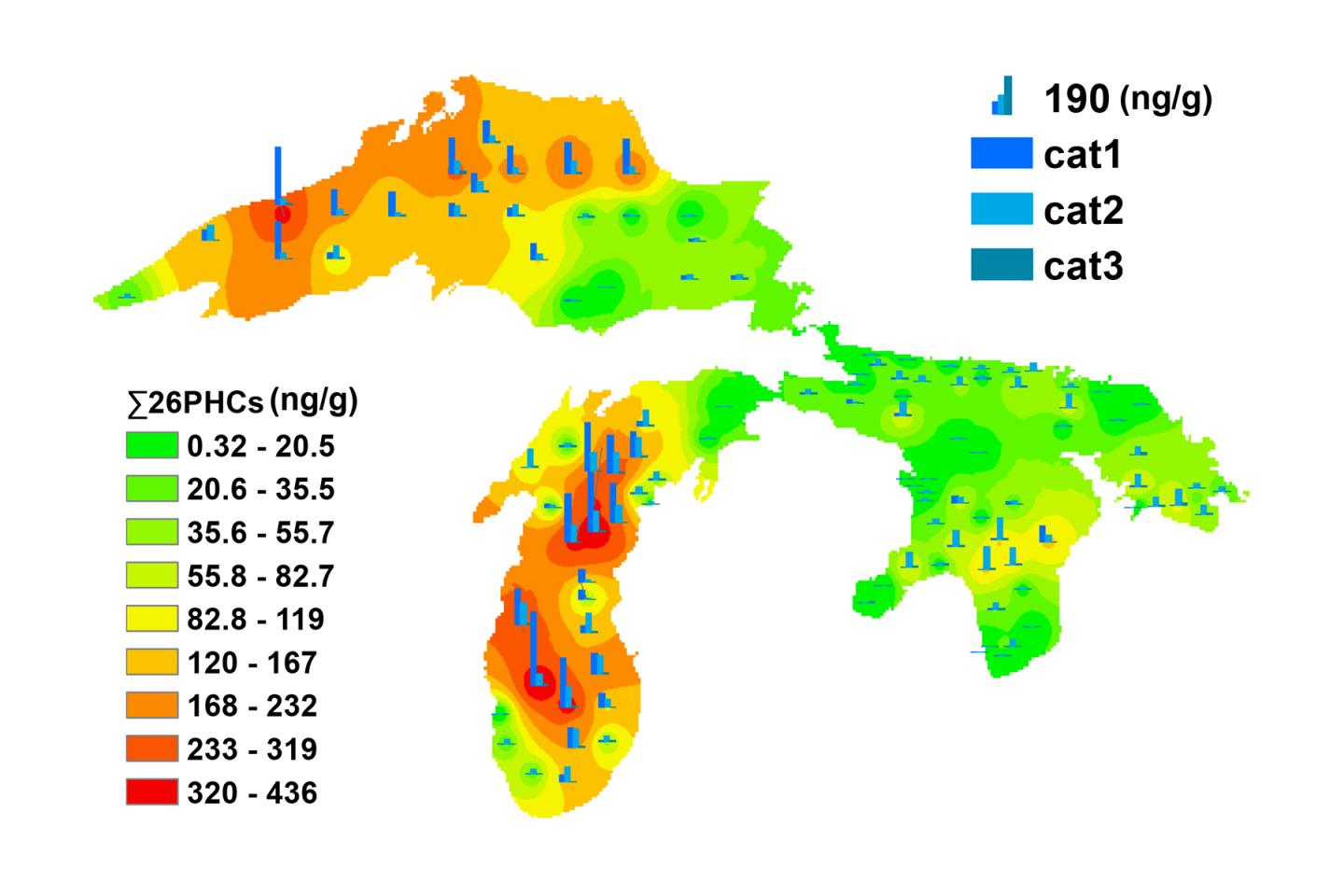Researchers at the University of Illinois at Chicago have mapped the location of thousands of tons of polyhalogenated carbazoles (PHCZs), an emerging chemical of concern, in the sediment of the Great Lakes and estimated their amount.
Based on soil samples from the lake bottom and core samples from beneath it, they estimate that about 3,000 tons of PHCZs lie in the sediment under lakes Michigan, Superior and Huron. But not all of it is pollution.
“Because the amount of PHCZs we found is so high, and because of their location in the lakes as well as in the sediment cores we took, we believe that most of the PHCZs in these lakes is the result of natural processes,” said An Li, professor of environmental and occupational health sciences in the UIC School of Public Health and corresponding author of the study, which appeared in the journal Environmental Science & Technology.
“However, we see some PHCZs in sediment laid down in more recent years, which is very likely from man-made sources. These are considered chemicals of emerging concern and should be monitored carefully,” Li said.
PHCZs are similar to dioxins — highly toxic substances that can cause developmental problems and have been linked to certain cancers. Studies of PHCZs done in zebrafish have shown that these chemicals too can disrupt embryonic development, and another study found that some PHCZs exhibit dioxin-like activity in human breast cancer cells.
Li has monitored environmental pollutants for five years through the Great Lakes Sediment Surveillance program. In this study, Li looked at sediment samples from the three upper Great Lakes and tested for 26 different PHCZs using gas chromatography in combination with mass spectrometry.”The similarities of PHCZs in chemical structure with legacy pollutants and their potential toxicity have caused increasing concern,” said the authors in their research abstract.
Based on the results, the researchers estimate that approximately 3,000 tons of PHCZs are contained in the sediment of the three lakes, with Lake Michigan having the greatest concentrations.
Follow the link for the full press release or read the authors’ findings in Environmental Science & Technology.
Image credit An Li.












